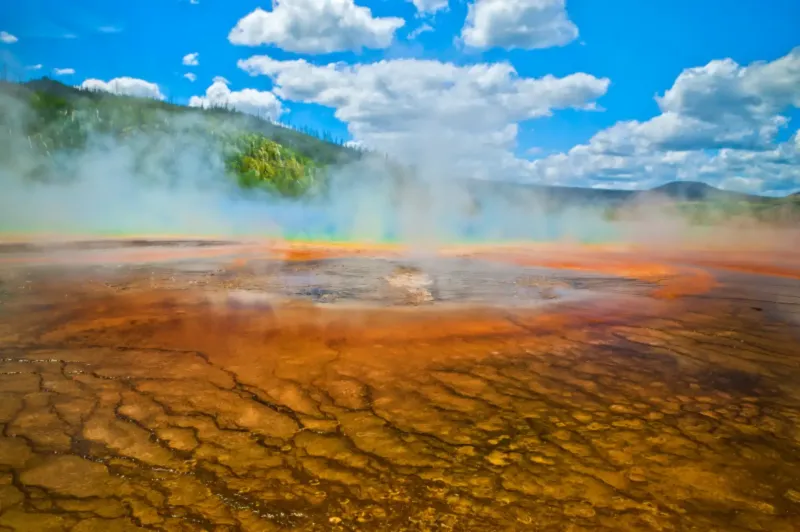
Introduction:
Yellowstone National Park is an American national park located in Wyoming, Montana, and Idaho. It was established by the U.S. Congress and signed into law by President Ulysses S. Grant on March 1, 1872. Yellowstone was the first national park in the U.S. and is also widely held to be the first national park in the world. The park is known for its wildlife and its many geothermal features, especially Old Faithful Geyser, one of its most popular attractions. It has many types of ecosystems, but the subalpine forest is the most abundant. It is part of the South Central Rockies forests ecoregion.
Yellowstone National Park spans an area of 3,468.4 square miles (8,983 km2), comprising lakes, canyons, rivers and mountain ranges. Yellowstone Lake is one of the largest high-elevation lakes in North America and is centered over the Yellowstone Caldera, the largest supervolcano on the continent. The caldera is considered an active volcano, and has erupted with tremendous force several times in the last two million years. Half of the world's geothermal features are in Yellowstone, fueled by this ongoing volcanism. Lava flows and rocks from volcanic eruptions cover most of the land area of Yellowstone. The park is the centerpiece of the Greater Yellowstone Ecosystem, the largest remaining nearly-intact ecosystem in the Earth's northern temperate zone.
In 1978, Yellowstone National Park was named a World Heritage Site. Hundreds of species of mammals, birds, fish, and reptiles have been documented, including several that are either endangered or threatened. The vast forests and grasslands also include unique species of plants. Yellowstone Park is the largest and most famous megafauna location in the contiguous United States. Grizzly bears, wolves, and free-ranging herds of bison and elk live in the park. The Yellowstone Park bison herd is the oldest and largest public bison herd in the United States. Forest fires occur in the park each year; in the large forest fires of 1988, almost one third of the park was burnt. Yellowstone has numerous recreational opportunities, including hiking, camping, boating, fishing, and sightseeing. Paved roads provide close access to the major geothermal areas as well as some of the lakes and waterfalls. During the winter, visitors often access the park by way of guided tours that use either snow coaches or snowmobiles.
Read more >> Explore Mount Rushmore National Memorial Americas
Features Of Yellowstone National Park
Some features of Yellowstone National Park are its hot springs, geysers, and waterfalls. It is also home to a large variety of wildlife, including bison, elk, and grizzly bears.
Best Sunrise Spots In Yellowstone National Park
1. Artist Point
2. Grand Prismatic Spring
3. Yellowstone Lake
4. Morning Glory Pool
5. Gibbon Meadows
Best Sunset Spots In Yellowstone National Park
1. The Grand Canyon of the Yellowstone
2. Artist Point
3. Fishing Bridge
4. Mud Volcano
5. West Thumb
Best Things To Do In Yellowstone National Park
1. Drive the scenic roads and take in the views of the mountains, lakes and wildlife.
2. Hike or bike one of the many trails through the park.
3. Take a dip in one of the hot springs or geysers.
4. Go on a wildlife safari and look for bison, elk, bears and other animals.
5. Take a scenic boat ride on one of the lakes.
6. Visit the Hayden Planetarium or one of the other educational facilities in the park.
7. Go camping in one of the many campgrounds in the park.
8. Take a scenic drive through the park on the Snowcoach or Snowmobile.
9. Go skiing or snowboarding on one of the slopes in the park.








Showing 0 verified guest comments